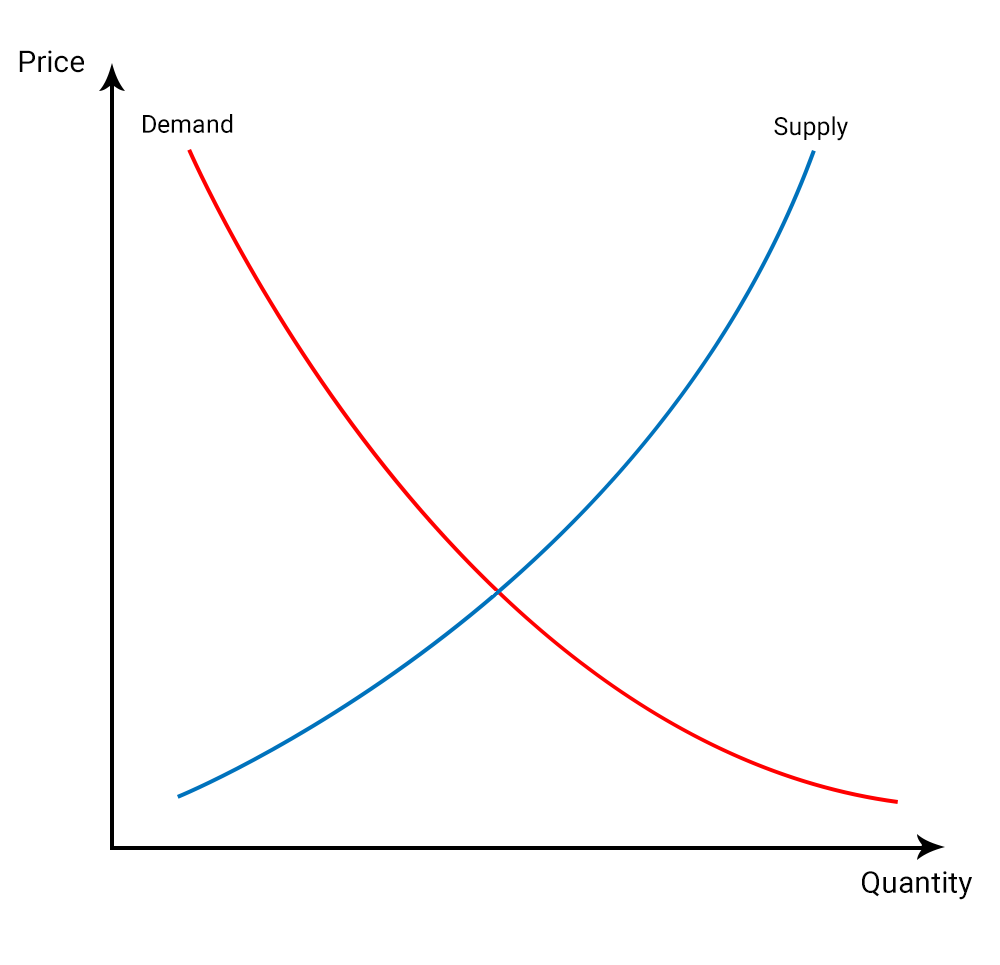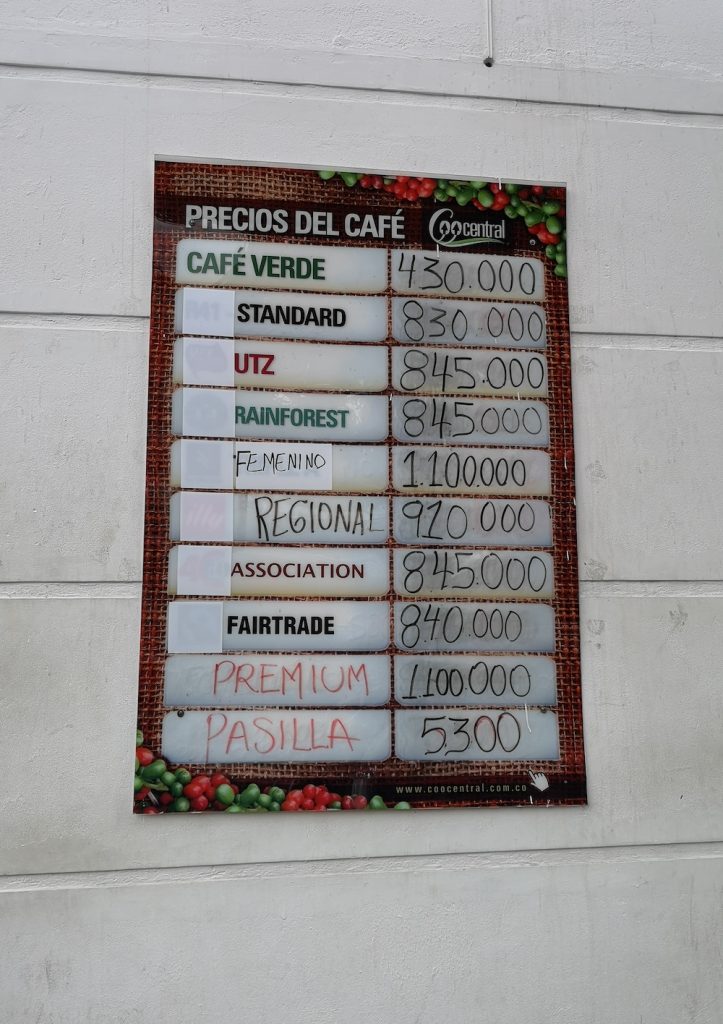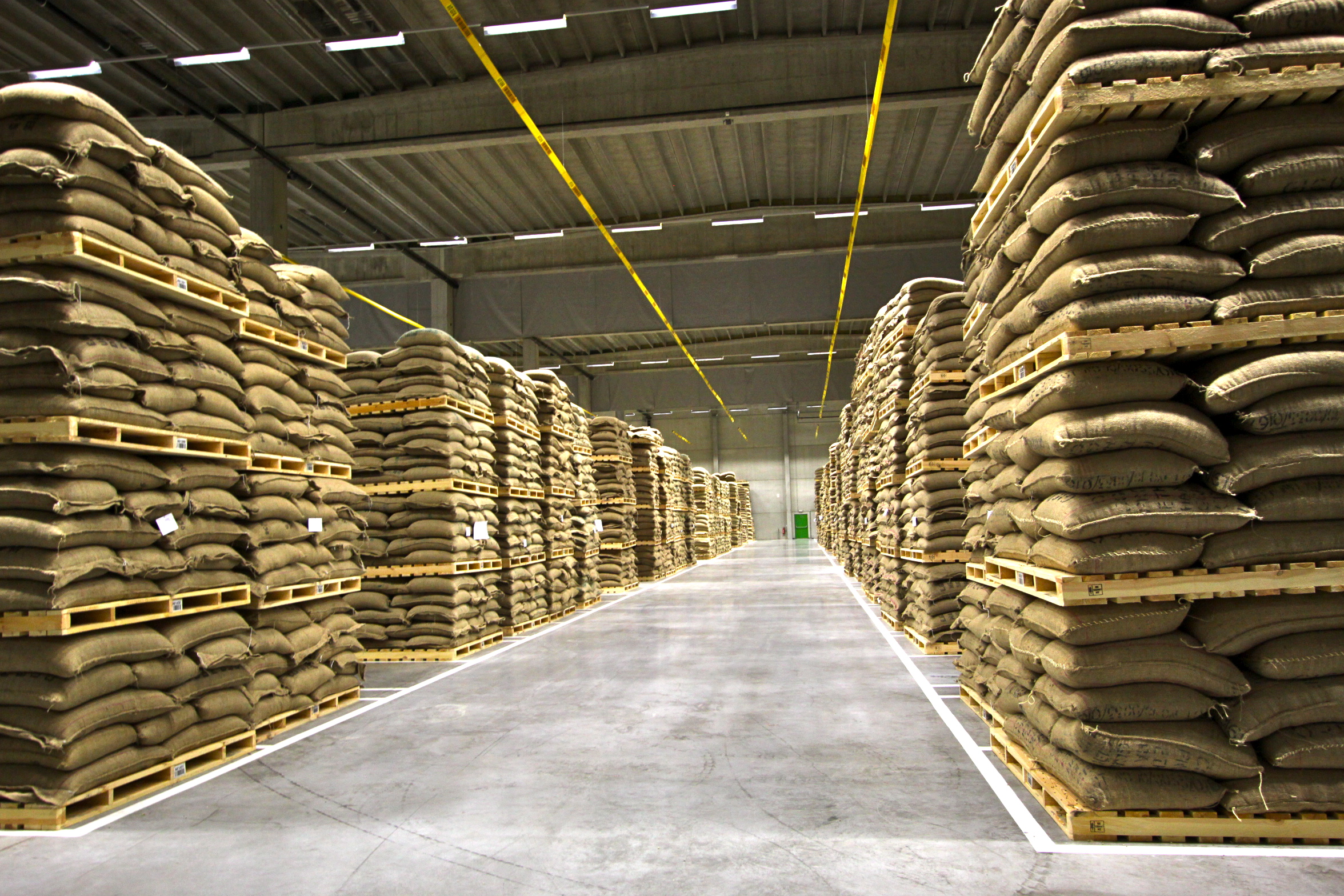This blog post is part of a series called Why Transparency Matters. Read all posts in this series here.
Today the specialty coffee sector is still dependent on the C-price in varying ways. Even when we make our best efforts to pay prices that are not influenced or related to the C-market, we are compared to it. In order to break entirely from the C-price, the specialty industry needs its own pricing mechanism for distinct high quality coffees. So what would a specialty pricing mechanism look like, and what needs to happen to make it a reality?
What is a price discovery mechanism?
Price discovery is the seller and buyer of a product or service agreeing on price based on a number of factors, primarily supply and demand. The commercial coffee world has its own price discovery mechanism which is the Intercontinental Exchange (ICE) which sets the C-price.
To be clear, the C-price is not an actual exchange of money from coffee buyer to farmer, it is an indicator of what people are generally paying for green coffee, or will be in the future. It is used to give traders a starting place for setting a price for the actual coffee they are buying. They might decide to pay C+ 5 for a coffee of a higher grade, C-10 for a lower grade, or C+ 10 for a coffee with a certification.
The commodity market exists on the assumption that every unit of production is the same and interchangeable with any other unit of production. In the case of commodified coffee, the coffee can be sourced from any farmer, region or country that has coffee to offer. If supply in Ethiopia is low, coffee can be bought from Brazil.
Only when the global supply of coffee runs low, usually due to poor weather or disease outbreaks in the bigger coffee producing countries, will prices go up for all coffee. That means the amount a coffee farmer in Honduras, Kenya or Indonesia is paid for their coffee depends not on the supply and demand of their own production, but that of countries that may be very far away.
This is one of the many issues with using the C-price as the basis for setting specialty prices. It does not recognise individual lots as differentiated quality products.

How fixed prices are still influenced by the C-price
At Nordic Approach we buy coffee almost entirely based on fixed prices. That is, we set a minimum price and consistently pay this amount each harvest, even when the C-price drops. Regardless, those fixed prices are always compared to the C-price, because there is no other indicator to use for comparison.
Here is an example from Colombia, where we agree on a fixed base price, in local currency for producers of 1,000,000 COP per carga. A carga is 125kg of parchment coffee, meaning coffee that has yet to be milled and prepared for export. This is an agreed minimum, in most cases we pay well above this. We came to this price with our export partners based on research they conducted into the cost of living in Colombia. Together we determined that this was the minimum price we could pay and allow our producing partners to earn the equivalent of minimum wage in Colombia.
In Colombia the local price is set by the National Federation of Coffee Growers (FNC). They start with the C-price, then add a premium for the general high quality of coffee exported from Colombia, and they factor in the exchange rate from COP to USD. This means the FNC price changes daily. In the times I have visited Colombia the minimum price in COP per carga has ranged from COP687,000 to COP835,000.
Against this local price, our fixed minimum of 1,000,000 COP looks good, but if the C-price increases, so too will the FNC price, and our fixed minimum might not look so generous. We would have to increase the minimum price we pay or risk losing business.
In this way, we are still beholden to the C-Price. Even though we set a minimum price for a differentiated high quality coffee, our producers’ perception of that price is dictated by a pricing mechanism set for commodified non-differentiated coffee.

What would a specialty price discovery mechanism look like?
The purpose of a specialty price discovery mechanism would be to determine pricing benchmarks that accurately reflect the supply and demand for coffees that have value because of their unique quality and individual identity. These prices should ensure that a producer is earning an amount above their costs, one that equates to a good lifestyle and the capacity to reinvest and improve their business.
There are three essential elements to make this possible:
Market information
Coffee producers are operating in a market where the balance of power is so unquestionably not in their favour. Very few producers have direct access to the markets where their coffee is purchased and therefore can not play an active role in negotiating on the price they achieve. For the market to be both fair and efficient, buyers and sellers need equal access to price information.
This is the real value of transparency reports. By publishing the price data and all the costs involved in transforming and transporting coffee from cherry to cup, we give producers the information necessary to begin negotiating a fair price for their own coffee. Similarly, if consumers are aware of the true costs of producing coffee, roasters and cafe owners can begin building a market for higher priced coffees, which allows for better payments to producers.
Cost of production and cost of living
While we are making progress on transparency, cost of production remains a missing link in our efforts to create an independent price discovery mechanism. We have very little information about the cost of production that relates specifically to a region within a country, different types of production structures and the additional investments being made to create a quality differentiated product. There are several efforts to tackle this, like the exporter Azahar who have invested in defining the cost of living for the regions in Colombia where they work. This is just the beginning.
Supply and demand for a differentiated product
The speciality market is founded on the belief that each coffee produced is unique in quality and identity. That differentiation and improved quality is usually achieved by the producers who must invest in careful cultivation and processing of their coffee. Coffees may be differentiated to varying degrees — to a region, a community, or to an individual producer. The producers who generally earn the highest prices for their coffees are those who market their products as brands, individual to them.
This is a fundamental value of specialty coffee and must be factored into any price discovery mechanism we create. Prices we pay should not rely on the supply and demand of generic global coffee products, but on the supply and demand of an individual coffee.
To achieve this we must help farmers build their own, differentiated brands. More on that in the next blog post.
Transparency at Nordic Approach
Transparency is one of the founding principles of Nordic Approach and we have shared FOB prices with customers since we began selling coffee.
Personalised Transparency Reports
We currently offer a personalised transparency report for roasters which gives the exact breakdown of costs from FOB to the price you paid for any coffee you purchased from Nordic Approach, including our margin.
If you buy coffee from us, you can sign The Pledge. This report includes the information you need to meet the transparency goals of this initiative. Contact your sales rep to request your report.
Nordic Approach 2019 transparency report
We are currently working on detailed transparency reports for every coffee purchased between September 2018 and September 2019. The first report will be published by the end of the year. Our goal is to include the farm gate price, the FOB, and the costs and value added in between. In future years we will work towards providing cost of production and cost of living context for this data.
Why transparency matters – blog series
This post is part of a series of blog posts called Why Transparency Matters. Beyond a number to publish on our websites or packaging, we are exploring the ways we can all use this information to transform the coffee market to be more sustainable and fair. Read Part 1 in this series, What I Thought I Knew About Coffee and Part 2: The Real Power of Price Information
Have thoughts or questions?
We are very interested in conversations about transparency, and how it should be used to create a sustainable coffee industry. Email suzie@nordicapproach.no to share your ideas.

